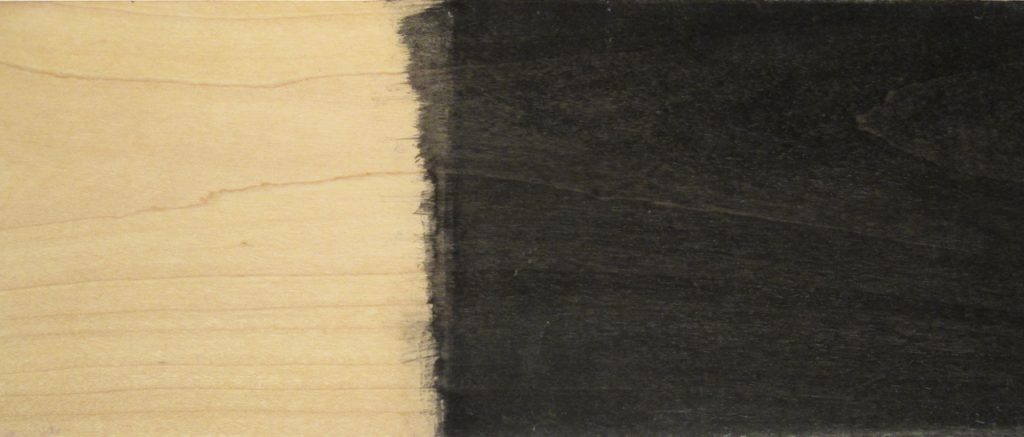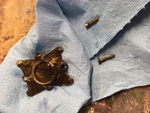We may receive a commission when you use our affiliate links. However, this does not impact our recommendations.

Black Lockwood water-soluble dye will stain maple very black without obscuring like paint.
An acquaintance of mine was making a small project out of maple and he wanted it to be black. He asked if dye would do it, or should he use a different wood?
The answer, of course, is dye; it works great. To get the wood really black, either dissolve the dye at a much higher concentration than the manufacturer suggests or apply a number of coats, allowing each to dry thoroughly before applying the next. But there are some caveats to this answer.
It used to be, forty years ago when I got started in woodworking, that the dyes carried by Woodcraft, Rockler (called The Woodworker’s Store back then) and others were made by W. D. Lockwood, so these were the dyes I got started with. The company still exists at www.wdlockwood.com, and its dyes are also available from www.woodworker.com, and www.toolsforworkingwood.com among other online sources. The Lockwood dyes I used (and still use) came in powder form for me to dissolve in water.
Water is not compatible with lacquer, of course, so when I sprayed lacquer and wanted to tint it to make a toner, I used what were (and still are) called non-grain-raising (NGR) stains. These are a different kind of dye called “metal-complex” or “metalized” and come already thinned in acetone (methanol back then). Now several companies provide concentrated versions of this dye. TransTint is the most widely available and is just as good for tinting lacquer (and water-based finishes) as the NGR dyes, which are widely available from suppliers to professional finishers. Maybe because I was so used to using the water-soluble Lockwood dyes for staining wood, I’ve never found the metal-complex dyes as useful for staining wood directly. For example, for making maple black.
Recently, a dye from General Finishes became available at woodworking stores, but it is very different from Lockwood and NGR because it contains
an acrylic binder, which locks the color in place so it can’t be darkened with many coats without building on top and muddying the wood. And unlike
Lockwood and the concentrated metal-complex dyes, it can’t be made into a higher concentration of color to liquid.
Why do I give you all this background? Because I can’t any longer simply tell my acquaintance to use “dye” to make his maple black. I have to tell him to use Lockwood water-soluble dye.
Here are some supplies and tools we find essential in our everyday work around the shop. We may receive a commission from sales referred by our links; however, we have carefully selected these products for their usefulness and quality.









